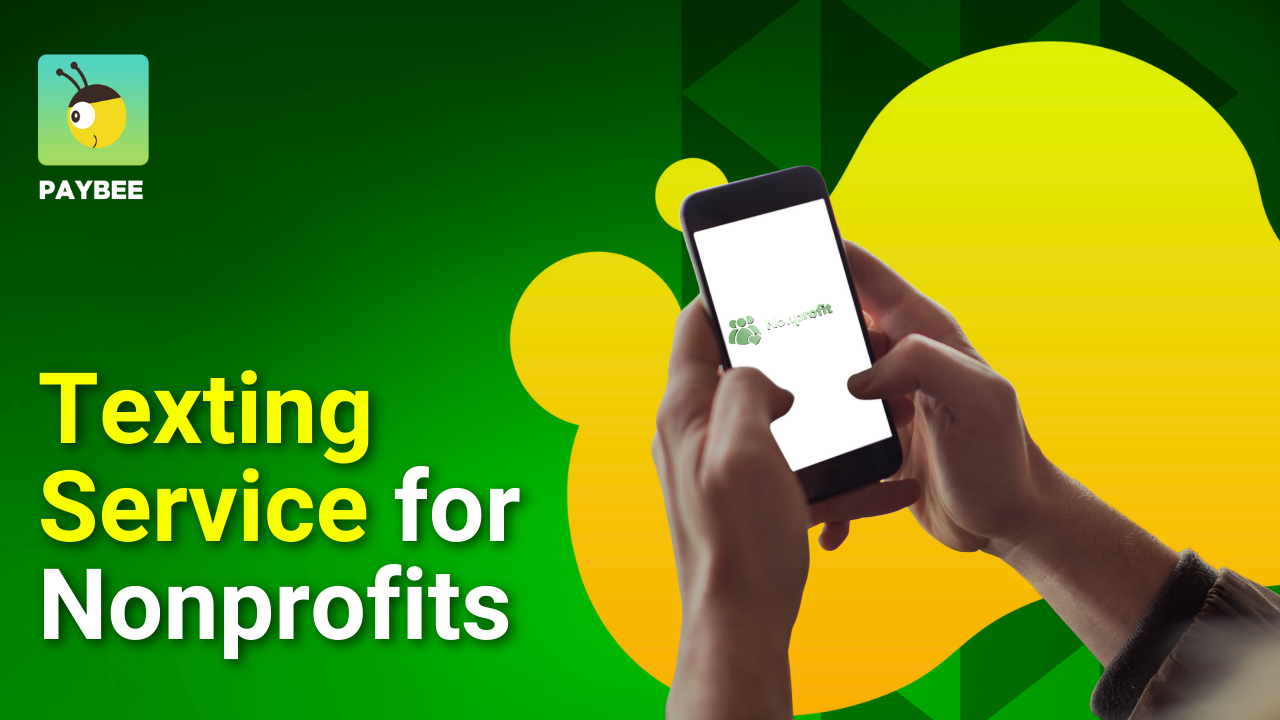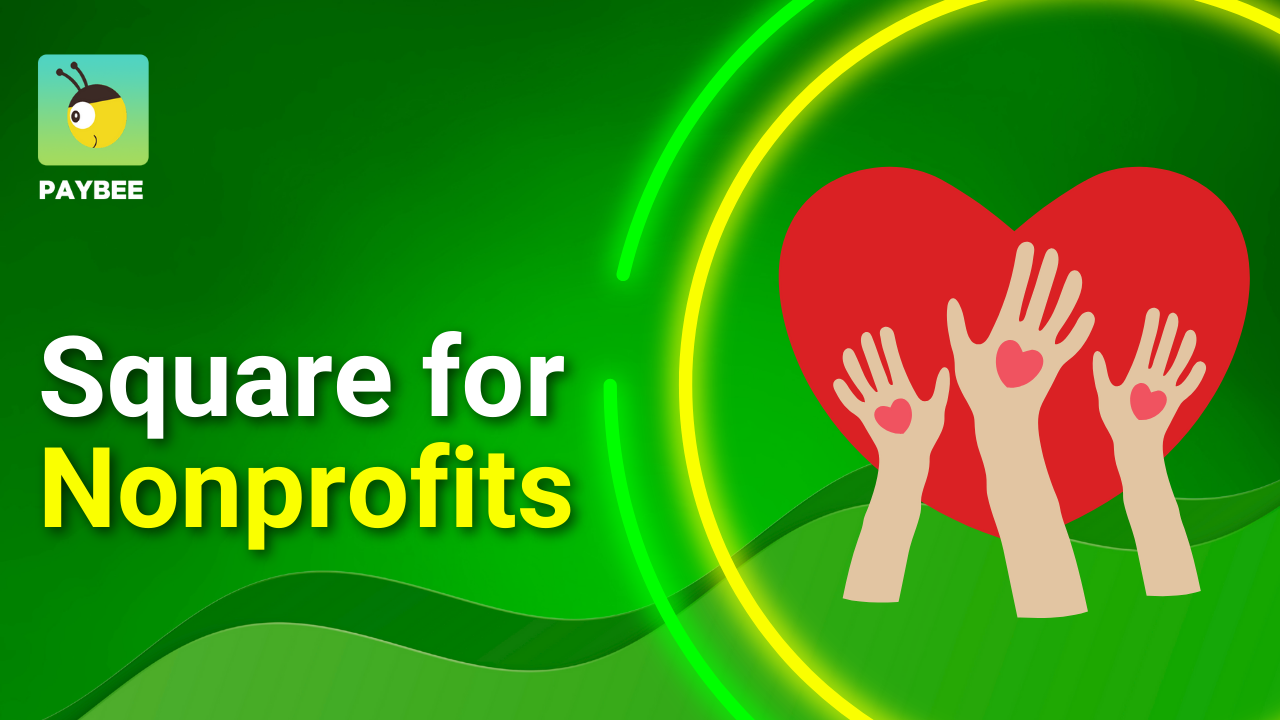
The 2025 Playbook for a Texting Service for Nonprofits
The 2025 Playbook for Texting Service for Nonprofits
Playbook Primer: Why Texts Win at Fundraising
Over 90% of Americans own a smartphone, making text messaging one of the most common ways to communicate. In the last 30 years, SMS has grown from a basic tool for staying connected with friends and family to a powerful platform for sharing news, conducting business, and, now more than ever, helping nonprofits raise funds quickly and efficiently.
But what exactly is SMS messaging and why has it become one of the most effective ways to raise funds for nonprofit campaigns?
Let’s start with the basics: SMS, or short message service, refers to text messages sent between mobile phones. These messages max out at 160 characters and can include text, links, phone numbers, or even emojis. SMS messages are short, clear, and straight to the point—and that’s exactly why they work.
Text messages also have an average open rate of 98%, with 90% of those being read within just three minutes after receipt. That kind of speed and visibility makes SMS a powerful strategy for any nonprofit looking to raise funding for their cause. It’s one of the fastest ways to grab donor attention and turn a simple text into meaningful financial support.
When you think about it, it’s no surprise that more and more nonprofits are adding text messaging to their fundraising toolkit. It’s fast, efficient, and easy to use for both donors and nonprofits—with the potential for funds to hit your organization’s account within minutes. Whether you’re brand new to mobile fundraising or are looking to improve your current strategy, this playbook will walk you through everything you need to launch a successful text message fundraising campaign, step by step.
If you’d like to go a little bit deeper into the fundraising world, check out Paybee’s website, where you will find everything you need to know about live,hybrid and virtual fundraising, as well as marketing videos, free resource downloads, insightful blog articles, and, of course, everything you need to know about our all-in-one fundraising platform that does all the work for you so you can sit back and focus on what really counts—raising funds for your charity.
Play-by-Play: Launching Your Text Fundraising Campaign
Step One: Setting Up Your Mass Texting Campaign
Text message fundraising is one of the fastest and easiest ways for nonprofits to reach supporters and collect donations. It’s simple, direct, and donor-friendly—but if your nonprofit is new to the concept, you might be wondering how the process works and how SMS fundraising can turn simple texts into donation dollars.
1) Choose an SMS fundraising platform that matches your fundraising goals and campaign style (we’ll go over your options later).
2) Pick a memorable keyword like “GIVE,” “FEED,” or “HELP”—something easy to remember and that ties in with your cause.
3) Send a short text message to your supporter list, asking them to text your chosen keyword to the 5- or 6-digit number (called a short code) that's been provided to you by your platform.
Step Two: Pick Your Play
Once a donor texts your keyword, one of two things happens, depending on whether you’re using Text-to-Donate or Text-to-Give. While the terms sound alike, they do function in different ways. Here's how they compare:
Text-to-Donate....
- Sends donors a link to a mobile donation form.
- Donors can choose any amount to give and can pay by credit card or mobile payment apps like Venmo, Google Pay, etc.
- This format does require data or Wi-Fi in order for the link to open.
- Ideal for flexible campaigns looking to collect donations of any size.
Text-to-Give…
- Donation is billed directly to the donor’s phone plan.
- The amount is preset (often smaller amounts such as $5, $10, or $25).
- No Wi-Fi or data needed—it’s as simple as sending a regular text.
- Ideal for campaigns looking to bring in quick, small donations from a wide audience.
Now that you’ve got the basics down—and you know the difference between Text-to-Donate and Text-to-Give—you’re ready to figure out what kind of campaign makes the most sense for your organization. Whether you’re fundraising for a one-time need or planning a long-term push, there’s a text-based approach that’ll fit.
Just like nonprofits, no two campaigns are the same, and the beauty of text messaging is how adaptable it is. Next, we’ll take a look at the three most popular SMS campaign types to help you choose the right fit for your goals and audience.
One-Time Appeal
When something urgent happens, like a natural disaster or humanitarian crisis, you need donations and you need them fast. Text-to-Give is a great option in these kinds of situations because donors can respond instantly, without even needing Wi-Fi or data, and with smaller preset amounts, it becomes more manageable for people to contribute within their means and still feel like they're making a difference. A message like “Text RELIEF to 12345 to donate $10 now” can lead to immediate action when it matters most.
Recurring Giving
If your nonprofit is running a program that needs consistent funding, like food banks, animal shelters, or after-school services, recurring donations can make a huge difference and help cover costs every month. Text-to-Donate makes it easy for supporters to set up monthly donations through a mobile link. Something like “Text SUSTAIN to 12345 to become a monthly donor” works well to encourage long-term support.
Event-Based Campaign
Gala nights, benefit concerts, live stream fundraisers—whatever the event, SMS can help capture donations right when people feel most inspired. Text-to-Donate is perfect for this. It sends a link where attendees can choose how much to give. Try a message like “Text GALA to 12345 to support our cause tonight” during your next live, virtual, or hybrid fundraiser, or have your platform create QR codes that are placed throughout the venue or on marketing materials so people can just click and send their donation to charity right on the spot
Choosing the right format—whether it's fast and fixed or flexible and ongoing—can make a big difference in how donors respond. Match your method to your audience and your goal, and you’ll be set up to make every message count.
Step Three: Run the Play and Keep It Going
So, once you've got your texting platform set up, your keyword chosen, and your campaign ready to roll, what's next? Well, it’s time to send that message and keep things moving in the right direction. Text message fundraising works—but only when it’s built on strategy, not guesswork. A successful campaign isn’t just about sending texts. It’s about sending the right message to the right people at the right time—with a plan to back it up. Here’s your step-by-step playbook to get it right the first time.
Say It Simply (and Fast): You’ve only got 160 characters, so make them count. Keep your message short, clear, and just a little urgent. Think of something along the lines of “Text PUPS to 12345 to send $10 to out 🐾.” Avoid long intros or formal sign-offs. Make sure every word earns its place, and always end with a single, direct call to action. If the message can’t be read in 10 seconds, it’s too long.
Know Your Audience… & Segment It: Not everyone needs, or appreciates, the same cookie-cutter message. If your platform allows, separate (or segment) your supporters by interests or past giving history, and throw in a little emoji if it feels right. It's the little things that can make your message feel more direct and personal. For example: “Hi Sarah—text FEED to 12345 to help a local family tonight.🍴” Segmentation helps you avoid one-size-fits-all messaging and gives donors a reason to pay attention—because it feels like you’re talking to them, not at them.
Don’t Send It and Forget It: After your texts go out, check back regularly and see how they’re doing. Are people opening them? Clicking? Giving? If not, don’t panic—try changing up the timing or playing with the wording. The moment your message lands can make or break its impact. Think about when your audience is most likely to be looking at their phones—lunch breaks, weekday evenings, or right before a big event.
Texting during key moments (like Giving Tuesday or live fundraising drives) can create urgency and drive instant action. Just avoid the early-morning or late-night sends.
Keep Setup Simple (Use Tutorials & Tools): f you’re new to SMS platforms, don’t reinvent the wheel. Use tools that offer built-in guidance—like campaign templates, live chat support, or short setup videos. Platforms like PayBee or GiveLively are good starting points.
Consider making a quick internal explanation video for your team so everyone feels comfortable with the tool—especially volunteers who may be scheduling or monitoring texts.
Ready to Win? Your Pre-Game Checklist
Future Plays: 2025 Short Message Service (SMS)Fundraising Trends to Watch
Text message fundraising continues to evolve fast—and this year, it’s all about smarter tech, easier giving, and more meaningful donor interactions. From AI-powered messaging to app integrations and real-time campaign tweaks, here’s what’s shaping the future of SMS fundraising.
1. AI Personalization Is Getting Real
Instead of sending the same message to everyone, nonprofits can now use AI to tailor texts based on things like when someone usually gives, what causes they care about, and how they respond. It's like giving every supporter their message—automatically.
Example: If a donor tends to give mid-month and supports animal rescues, they might get a message like:
"Puppy rescues are up this month. You can help—even $10 makes a difference. 🐶 [link]"
2. Chatbots Are Texting Back
Supporters want fast answers—and that’s where SMS chatbots come in. Long gone are the days when chatbots were glorified phone directory robots. Today’s chatbots can reply instantly with helpful information, confirm donations, or send someone the link they need without requiring staff intervention.
This means supporters stay engaged and can receive answers to any questions they may have around the clock, while your team gets to spend time on bigger-picture work.
3. Apps + SMS = One-Tap Giving
Lots of platforms now connect directly to donor apps or digital wallets like Apple Pay and Google Pay. That means someone can get your text, tap once, and their donation is done. No typing, no long forms—just fast, easy giving. A donor can tap the link in your message and donate using their saved info that’s already built into their digital payment app—the whole thing takes under 10 seconds.
4. Voice Assistants Are Joining In
People are using voice commands for everything—and now that includes donating. Text messages are starting to work hand-in-hand with tools like Siri, Alexa, and Google Assistant. Imagine you say, “Hey Siri, remind me to support the food drive,” and a donation text shows up later that day with a prompt to give. Our lives are busy and sometimes in a world where so much is getting thrown at you constantly, it’s nice to have someone (or something) keep you on track.
5. Live Campaign Data = Smarter Moves
Instead of waiting until your campaign ends to see what worked, new tools let you track things like clicks and conversions in real time. That means you can adjust your messages while the campaign’s still live—and get better results while it’s happening. If your message isn’t tracking, it’s easy to go into the platform, see what’s working, see what could be improved on, and make adjustments accordingly.
Defensive Plays: Tackling Text Fundraising Obstacles
Text Message Fundraising: Real Challenges & How to Handle Them
Text fundraising can be fast and effective—but it's not all smooth sailing. Between legal requirements, growing your list, and avoiding donor fatigue, there are a few bumps to look out for. Fortunately, none of them are deal-breakers. With a few smart moves, you can avoid most of the trouble spots.
Challenge: Following the Rules
Texting donors means playing by the rules—and there are a lot of them. U.S. nonprofits need to follow the Telephone Consumer Protection Act (TCPA), which states that you need clear permission to text supporters, and forgetting that can get expensive. Fines for TCPA violations can hit $500 to $1,500 per text, so staying compliant is a must. Many platforms, including Paybee, are on top of all the current regulations and make sure that your campaign is in compliance and look after things on their end so you don’t have to.
What to do:
Make sure people opt in before you send anything. Don’t buy lists. And always include a clear way to unsubscribe. A simple “Text STOP to opt out” at the end of every message is your best friend, making sure you’re following the rules and staying out of trouble.
Challenge: The Costs Add Up
Sending texts isn’t free. Most platforms charge by the number of messages or subscribers, and carriers might add fees, especially if you’re using a short code.
What to do:
Shop around. Some services bundle pricing in a way that’s easier to manage, so it’s important to compare different platforms, check out their pricing, and see which one is the best financial fit for your nonprofit. Tools like PayBee and GiveLively offer clear, upfront plans—just make sure you know what you’re getting into before you launch.
Challenge: Growing Your List
You can’t text people who haven’t opted in—and getting them to sign up isn’t always easy, and just blasting out an email that asks people to sign up just doesn’t cut it. Without a solid strategy, you’re stuck with a sub-par list that limits the number of people your campaign can reach.
What to do:
Get the keyword out there. Mention it in emails, at events, on social media, and even on donation receipts. Want to give people a nudge? Spark some excitement by offering incentives that make opting in a no-brainer. Think small thank-you gifts, exclusive event invites, or a shot at winning an interesting prize, and spread your keyword everywhere—emails, social posts, event flyers, even donation receipts—to catch people where they’re already engaged.
Challenge: Donor Burnout
Text too much and people stop paying attention. Worse, they might unsubscribe.
What to do:
Keep it light. A couple of messages a month is usually enough unless there’s an emergency. Make sure each text has a reason to exist—don’t just send out message for the sake of sending messages, or they’ll begin to fall on deaf ears.
Challenge: Tech Headaches for Small Teams
Some SMS platforms are built for big teams with tech support. That can be tough if you’re a small organization with one person handling everything.
What to do:
Pick tools that offer good support—live chat, simple onboarding, or even real humans you can talk to. Look for platforms that are built with both nonprofits and beginners in mind.
Summary: Quick Fixes for Common Issues
Choose options with live support or tutorials
MVP Players: Best Messaging Services for Fundraising Success
Choosing the SMS Platform That Works for You
There are a lot of text messaging services out there, and trying to pick one can get overwhelming—especially if you’re working with a small team, limited time, or a tight budget. The upside? Some platforms are built with nonprofits in mind, and they’re designed to help you launch campaigns without a ton of tech stress.
Here are five solid options. Each one has different strengths depending on what you’re trying to do, how comfortable your team is with tech, and how big your fundraising plans are.
Top Picks for Nonprofit Text Messaging
Paybee
Paybee is built specifically for fundraising, which makes it a good pick if events are part of your strategy. You can send out donation links via text or create QR codes that link to your donor page and scatter them around your event and on marketing materials to make donating even more convenient. They also have an easy-to-understand dashboard where you can see donations as they come in, so you can keep an eye on the success of your event in real-time.
Best for: Groups that host fundraising events (virtual, in-person, or hybrid) and want to keep everything in one place.
Twilio
Unlike Paybee, Twilio wasn’t built specifically for nonprofits—but it’s extremely powerful, although a bit complicated if technology and coding aren’t your thing. If you have a developer (or work with one), Twilio gives you the flexibility to build custom SMS flows, alerts, and donation prompts at scale.
Best for: large organizations with in-house tech support.
Textedly
Simple, clean, and easy to use, Textedly is great for smaller nonprofits that want to send mass texts, schedule campaigns, and stay under budget. It’s not loaded with advanced fundraising tools, but it gets the job done.
Best for: small teams with limited resources.
SimpleTexting
This platform combines affordability with powerful features like list segmentation, autoresponders, and campaign analytics. It also offers nonprofit discounts and has a very friendly learning curve.
Best for: growing nonprofits ready to scale their texting strategy.
MobileCause
MobileCause is built for mobile-first fundraising, including text-to-give, keyword campaigns, and donor engagement tracking. It also includes templates, coaching, and multichannel support.
Best for: nonprofits running frequent campaigns.
Comparison of Top Text Messaging Services for Nonprofits
Highlight Reel: Real Text Fundraising Successes
Text message fundraising isn’t just hype—a lot of groups have used it to bring in real money. Here are three campaigns that show how it can work in practice.
Red Cross—Getting Help Out Fast
When hurricanes like Harvey and Florence hit, the American Red Cross used texting to get the word out. They sent simple, direct messages asking for donations. No long explanations—just clear, urgent asks. The result? Over $75,000 was raised in just a few days.
University of Alabama—Reaching Out to Alumni
The university used SMS to help raise money for student scholarships. They focused on alumni who had given in the past, sending short reminders tied to past support. It wasn’t flashy, but it worked—more than $40,000 came in from mobile giving.
ASPCA—Helping Animals Through Texts
The ASPCA regularly uses texting to raise money for animal rescues. In one campaign, they sent messages based on what each donor cared about—like dog rescues or shelter support. That personal touch helped them bring in $25,000.
Group Campaign Focus Amount Raised
Red Cross Hurricane Relief $75,000
University of Alabama Scholarships $40,000
ASPCA Animal Rescue $25,000
Why this matters
None of these campaigns were complicated. The messages were short, easy to understand, and were sent to people that already had a connection to the cause. That's what makes SMS powerful—it’s direct, fast, and gets results without needing a big team or budget.
Playbook Q&A: Your Text Fundraising Questions Answered
Starting out with text message fundraising can feel confusing—so here’s a quick, no-nonsense rundown of some of the more basic questions people have when it comes to text message fundraising and mobile giving.
How much does it usually cost? Is it expensive to run an SMS fundraiser?
When it comes to text message fundraising platforms, prices vary. Some platforms are pretty affordable, with some as low as $10 to $50 a month for a basic setup without a lot of bells and whistles. If you need more features or send lots of texts, expect to pay more—sometimes up to $500 or so. There’s a variety to choose from so shop around to find what fits your budget.
From a legal aspect, what are the rules and what do I need to do to make sure I'm being compliant?
In the U.S., there’s a law called The Telephone Consumer Protection Act. It basically says you can’t text someone unless they’ve said it’s okay and have opted in to receive texts from your nonprofit. The key to staying on the right side of things is to always get explicit permission from the supporters and make opting out easy.
How do I know if my text fundraiser is working?
Most platforms will show you numbers like how many people opened your text, clicked on your links, and gave donations. Watch for people opting out too—that tells you when you might be texting too much. If your numbers are falling or opened texts just aren’t converting into donations, it may be time to re-evaluate and make some changes.
Can small nonprofits actually afford to run these kinds of fundraising campaigns?
100%. SMS fundraising campaigns are versatile and, when planned and executed the right way, can make a big difference in regard to the speed and amount of donations coming in. Plenty of tools are designed for smaller groups with tight budgets. You don’t have to go big right away—start simple and scale up when you’re ready.
How do I get more people to opt-in and sign up?
Make it easy and get the word out everywhere you can: your website, emails, social media, and events. Sometimes giving people a little extra incentive—like “thank-you” swag, exclusive event invites, downloadable goods or insider updates—can help encourage sign-ups.
Quick Recap
Final Play: Powering Nonprofit Success with SMS in 2025
Text message fundraising continues to be one of the most effective ways nonprofits can engage supporters and raise funds quickly and is fast becoming a staple in the nonprofit fundraising toolkit. In 2025, this SMS fundraising and online giving combines the speed of mobile communication with powerful tools that help you connect, personalize, and optimize your campaigns.
Why It Matters More Than Ever
- People actually read texts. Unlike emails that go unopened or social posts that get buried, most texts are read within minutes. If you’ve got something important to share—or ask—SMS is your best bet.
- It’s simple to give. Whether it’s tapping a link or replying to a message, mobile giving makes donating easy, even for supporters who aren’t tech-savvy.
- Messages feel more personal. Thanks to smarter tools, you can tailor messages based on who you’re talking to—what they’ve supported before, where they live, or what issues matter to them the most.
- You can adjust as you go. Real-time stats help you see what’s working and what’s not. That means you can tweak your messages mid-campaign, not after it’s over.
Key Takeaways for SMS Fundraising in 2025
Get in the Game Today
Text fundraising doesn’t need to be complicated. The tools are there, the strategies are proven, and your supporters are already on their phones. Use what you’ve learned here to build a campaign that’s focused, meaningful, and easy to manage.
Here’s a quick recap to keep in your back pocket:
- Set clear goals and group your audience in smart ways.
- Write messages that are short, clear, and action-driven.
- Choose a platform that fits your needs and budget.
- Follow the rules—always get opt-ins and honor opt-outs.
- Track your results and make changes as needed.
For more helpful guides and inspiring stories, visit Paybee’s blog—your partner in nonprofit fundraising success
Start Fundraising





